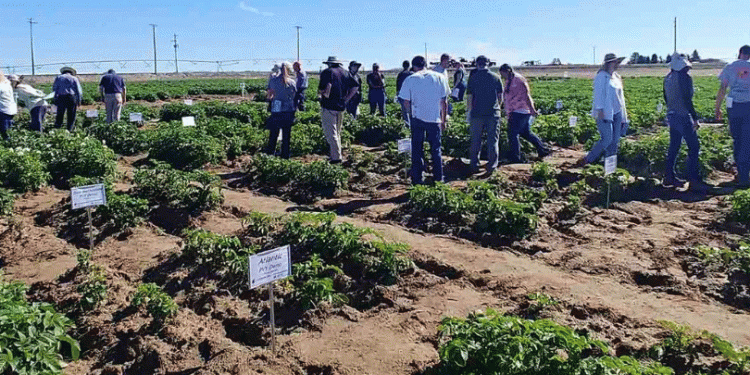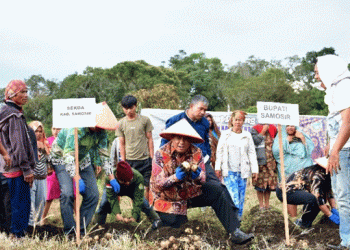In innovative efforts to combat the widespread threats of potato virus Y (PVY) and potato mop virus (PMTV), the federally funded Potato Virus Initiative is making significant progress. Led by Alex Karasev of the University of Idaho, this ambitious project is a collaborative effort involving more than 25 researchers from institutions across the country.
The Potato Virus Initiative aims to develop advanced virus control strategies, improve detection methods, develop resistant potato varieties, and implement effective seasonal management solutions. This initiative is critical as potato viruses pose a serious threat to potato yield and quality, affecting both the agricultural industry and food security.
Advanced detection methods
Researchers at Michigan State University, led by Jaime Wilbur and Mio Sato-Cruz, have optimized PVY detection tools. Their comparative analysis of direct tuber RT-PCR and leaflet ELISA methods promises earlier and more accurate virus identification, which is critical for seed certification programs.
Accelerating recovery from rest
At the University of Idaho, Nathan Gelles, Rabecca Hendricks and Nora Olsen are testing treatments using smoke and gibberellic acid (GA) to speed up dormancy release in seed potatoes. This study aims to improve the reliability of direct testing of tubers for PVY, providing timely and accurate results for growers.
Yield impact studies
Extensive field testing by the University of Idaho team showed that PVY infection affects yield, the severity of which depends on the potato variety and the level of infection. These insights are valuable for commercial growers who can effectively manage their crops.
Optimal detection after harvest
Researchers at North Dakota State University have determined the most effective timing for detecting PMTV in tubers, recommending testing three months after harvest for optimal results, greatly improving the efficiency of seed testing programs.
Mother seed tuber size
A study by Nathan Gelles, Rabecca Hendricks and Nora Olsen found that the incidence of PVY in a seed lot was independent of the size of the mother tuber used at planting. This finding confirms that seed certification agencies do not favor higher or lower PVY levels based on tuber size limitations.
Effective management strategies
Keli Yoho and Eric Wenninger from the University of Idaho demonstrated the effectiveness of mineral vegetable oils in reducing the spread of PVY under overhead irrigation. Their results highlight the benefits of integrating mineral oils with insecticides into pest management programs.
Soil microbiome
Researchers from Oregon State University and the US Department of Agriculture are examining the soil microbiome to identify factors that contribute to scab suppression. Their innovative research aims to identify beneficial microbial taxa and agricultural practices that can naturally enhance disease resistance.
Seasonal transmission PVY
Kasia M. Duellman and her team at the University of Idaho studied the incidence of PVY in daughter tubers as a function of the timing of aphid exposure. Their research suggests expanding PVY mitigation efforts at least until tuber swelling begins and indicates that age-related resistance may not make a significant contribution to PVY control until late in the season.
Breeding for resistance
The initiative’s breeding program is moving forward in developing molecular markers for PVY and PMTV resistance genes. Ongoing genetic analysis is aimed at better understanding the impact of the virus on potato physiology and accelerating the development of resistant potato varieties.
The Potato Virus Initiative: Developing Solutions illustrates the power of collaborative research in solving critical agricultural problems. By bringing together leading experts and leveraging cutting-edge science, this initiative aims to provide effective solutions that will benefit potato growers and the wider agricultural community.








